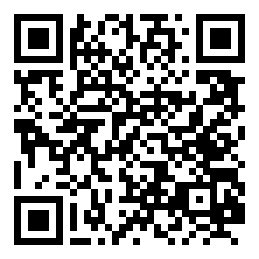Design and Message Credibility
Communicates' design as a mean to the conquest of plausibility: sender and referent transparency.
Selección del Editor
- Comments:
- 0
- Votes:
- 11
- ES
One of the ways of performing in graphic design, perhaps the most frequent, is to focus all attention in the formal composition of the graphical piece. Such piece is conceived as a work with intrinsic values: shape harmony, equilibrium or dynamism, iconic or chromatic originality, visual impact, and so forth. I don't believe this attitude can be associated, as it is customary, with art. I understand art is something more complex than aesthetics. But we do can sustain that a graphic designer that encompasses design in this particular way makes it so as anyone who composes an abstract painting, attempting to control that rectangle's formal structure.
There's no question about the validity of this concern: the message's harmony is an inalienable value of communication. Alas, here's the word that puts salt on the wound: the word “message”. A graphic designer designs graphical messages: his function is to optimize communication, bringing not only formal values to the piece, but also communicational effectiveness.
I've attended to several conferences and assessment sessions of graphical pieces where “communicational effectiveness” didn't appear at all as a parameter. I always quote a presentation from a graphical campaign where the advertising message's key concept was written vertically. With it, legibility loss was beyond 50%. When pointing out this issue to the designer he, without hesitating, clarified me that it was convenient to write it that way for aesthetical reasons. If we ask ourselves about this authentic deviation's origin (a highly harmful one), we could detect two sources: a cultural one, and a commercial one.
The first source appears to be the culture of artistic crafts and applied arts; a cultura that survives, yet degrades, on that naive concept of graphic design as a mere decoration of a message. It refers to a delay on cultural development. The second source is commercial and it comes from the consumer society's imperatives. Message design, as well as other design fields, has suffered the impact of an excessive demand of originality, of convention breaking, whose unequivocal origin is to sharpen the competition, specially in massive markets, and the consequential compulsion to differentiation. Such events have lead to formal innovation and creativity to occupy a space previously taken by quality and effectiveness.
In a manner of speaking, above the particular message, the intended one, a layer of message-unrelated autonomous shapes layer floats, carrying another message (originality's one), that covers up the one which is supposed to boost. Ironically, such compulsion to altering currently conventional models due to their proved performance, has mostly led to reducing it.
The misnamed “minimalism” in industrial design has invented, for example, a cilindrical handle faucet, instead of the ancient crosstree. “Beautiful formal synthesis” that prevents to close the faucet with your hands wet. In the context of communication, this dysfunction is visible in the high volume of frustrated messaged, messages that the audience neither understands nor remembers. I'm more interested in reflecting about the conditions of communicational success than an analysis of those failures. That goal has led me to the concept of “message credibility” and its direct relation to its “plausibility”.
I. Plausibility
A key condition for an effective message is its credibility. A non plausible message is a failed message. And credibility is the main instrument of persuasion: in order to convince me, you must make me feel that what you're saying is true. Such is, precisely, the mission of rhetoric: the art of persuading. And here, before moving on, it is proper to differentiate truth from plausibility. Let's see an example:
When I hear the church's bell strike twelve I think it must be “around twelve o'clock”; usually these mechanisms aren't high-precision. Even if it were the exact time, I doubt that. However, if I here bells striking twelve at the same time in two nearby churches, I will tend to believe that the time is exactly twelve o'clock. Even if it is 12:05.
Not all true things are plausible and not all plausible things are true: let us remember Galileo and his hypothesis about the Earth's roundness. What persuades is not the truth but the plausiblity that gives credibility to the message: his hypothesis wasn't credible enough. This, which is stating the obvious, ironically doesn't happen in a high volume of public messages. Social communication lives under suspicion of falsehood.
Part of that suspicion comes from the social offer unloyal nature: the social relationships system is essencially false, as behind any connivance pact, domination operates structurally. Every social message contains -whether the sender wants it or not- a certain form of betrayal to the receiver. A ruthless condition. Controlling political and economincal power over massive media has, precisely, the goal of conceiling the truth and make the lie plausible. And this has been proven more than a century ago.
Putting aside the issue of honesty in communication, I'm interested in analyzing another source of falsehood suspicion: message ineffectiveness, writing errors. And this isn't a social reality flaw but a communicator's flaw. And such defect can be corrected through professionalism.
What concerns me here isn't a reflection about veracity, which claims an ethical approach rather than a technical one, but about plausibility. The communicator's challenge is not to switch a false message for a truthful one, but to make the message, whether it's true or not, sound plausible. This technical responsability can, in some cases, turn out unpleasant but it is the real responsability of a good professional.
II. Two sources of plausibility
There are several factors that favor a message's plausibility; however, I'll refer to just two of them here: the content's transparency and the sender's transparency; that is, the plausible message must refer convincingly to reality and manifest the sender's authenticity.
Let's have a look at the first aspect: the referent's transparency. To do so, let's begin with an example. Let's think in the dauntless efforts of publicists to convince consumers that a particular brand of washing powder “washes whiter”. Their mission is to accomplish it, despite the fact that in the endless series of washing powders, it is naturally impossible to determine which one washes whiter than the others. In the face of a similar problem, communicators at Carlsberg, owners of some enviable rhetorical skills, gave a brilliant response: “Probably, the best beer in the world”. The magic occurs clearly in the adverb “probably”; that doesn't mean “it is proven” but that “there is a high probability”. Every promise, to be believed in, must be stopped on time. That is, to never incur in overpromising. A statement such as “I won't love anyone the way I love you” awakens a response of the kind “you'll tell that to everyone”. An overpromise —whether it is verbal or visual— is, at best, “today's bread and tomorrow's hunger”; for by its own definition, it is unsustainable.
By “referent's transparency” we're talking about what in semiotics is called “referential illusion”, that is, the conviction that what we listen or what we read isn't a group of messages but reality itself. It is also called “reality illusion”. This occurs because the message has become transparent, invisible: what we “see” is what they've wanted to tell us. hat is, the strategy of realism. When walking down any neighbourhood, I read in a sign: “EGGS FOR SALE”, the idea in my mind isn't “I'm being informed that they have eggs for sale and they want to sell them to me”. What I think simply is: “there they sell eggs”. There is no distance between message and reality. A good communicator must achieve exactly that.
What does this have to do with design? Well, everything. Whatever works for the verbal messsage also works for the visual message. And, if both rhetorics reinforce reciprocally, the message will be able to be believed. An example: a second-hand wind, really cheap but with a high-end label, is a terrible wine; for the lie that'll jump out when tasting it, will only make it worse.
This must not lead us to the conclusion that plausibility is achieved by modifying the message by its quality but by rhetorics. More than once a supermarket's hideous graphic brand has been legitimized with the argument of its forte being low prices. For the misinformed opinionated low price is communicated with low quality design. Wrong: a cheap supermarket isn't “vulgar” but “simple”. That is, the first test of the designer's rightness is to make the message's image credible. The distance between signifier and signified must be disolved.
Whether it is a text, a graphical brand or an iconic image, the receiver must feel that this is what it says and it couldn't be said in any other way. The designer must make the message's shape, which will be inevitably arbitrary, to look natural. Thus, credible.
Let us have a look now at the second source of plausibility: the sender's transparency. The worst thing that can happen to a campaign is that the audience notices “it's pure publicity” (which is what occurs with most ad campaigns). And one of the causes of such incredulity (not the only one) is evidence that the one speaking isn't the advertiser but the agency. And naturally, part of the public takes it “from who it comes”.
In this subject, the communicator's challenge is to become transparent and make his client talk his way. It's about getting to play the character. Something similar to what a good actor achieves: to never be him but the character he must play. The sender's voice is a speech legitimation factor: the advertiser's message and identity. This requires at least two of the communicator's skills: clear and thorough catchmen of the client's personality and resource richness to “mimic his voice”.
To the message's plausibility one must add the advertiser's plausibility. A cultural center doesn't speak like a bank and a central bank doesn't talk like a commercial bank. It's about a matter of personality, this is, of style: before throwing ourseleves to create ads, you must define the pertinent language, that will not only give coherence to the speech, but also authenticity.
And what we say of advertising we can sustain it in the full extent of explicit or implicit messages: from architecture to on-hold music and the operator's answer. And, of course, of the identifying sign by excellence: the graphical brand.
III. Designer's resources
How can we make transparent both the message and the sender? You'll tell me: through its design. False answer or, at least, incomplete. Design lacks formulae. Unfortunately, there is a naive conception of the discipline, widely spread, that regards it as an one-for-all aesthetic, a panacea that contains the shape of things. This is false, design isn't a pharmacy.
Message effectiveness isn't a discipline miracle: design lacks answers. Design just gives visible shape to an answer acquired by the designer. Design is pure selective, combinatory intelligence of elements outside of it: it lacks contents of its own. And such intelligence, in order to succeed, must have something to select and combine. And the materials to select and combine (shapes, textures, colours, typefaces, icons, etc.) can only come from culture.
-
A person with great graphic culture but not educated as a design can get to make a quality graphic message (popular graphic).
-
A designer with empty bags of culture will only produce dead shapes, lacking of content or, even worse, with wrong contents.
-
A graphic designer deprived of graphic culture, will only apply recipes or trends and will produce an inadequate, defective message.
Which are, then, the designer's resources that will allow to produce effective, thus plausible messages? Basically two.
-
Understanding the need: intelligence and analytical sensibility. “Get wet” on the case. “Smell”, “clinical eye”, “physonomist sensibility”.
-
Defining the solution: richness of rhetorical resources and intelligence and sensibility to manage them.
And here comes to play the so-noted communicator's professional responsability, which is fulfilled through his capacity of detecting accurately the message's context, and his ability to choose the proper rhetoric to shape it. Comprehending the program depends on the domain of cultural and subcultural codes on which it is contained: languages and lingos, uses and traditions, aesthetics, lifestyles.
This interpretative ability of the program is the foundation stone of good communication. And, regretably, is one of the less developed skills. Even great designers come to fail on their design responses for placing them in contexts alien to the particular communicational need. Concerned on shaping the message, they take for granted a poorly defined or standard context, unattending connotationtal and stylistic demands emanated from a thorough understanding of the real communicational fact that must be created. Excellent designs from the perspective of graphic quality, tend to be totally dysfunctional due to errors in detecting the proper paradigm.
In its relationship with formal language, design is a process which determines the proper rhetoric to the program that, besides the message, includes a determined sender, a determined audience and some specific reading conditions. And all of these elements limit the choice of language and rhetoric to apply. Thus, a rhetorically poor designer that works with a narrow language repertoir has a very restricted action field. It'll only produce quality products when the program matches any of the languages he masters. The good designer is necessarily a linguist.
To design an effective message isn't to disguise it with a preconceived aesthetic but to shape it properly. “Set the tone”. And this “linguism” doesn't come from any other source but the professional's cultural development. For such development will not only allow him to give a proper response to the program but to, previously, understand it.
Excelencia Profesional
Si buscas contenidos con este nivel de rigor, te interesará nuestra oferta académica. Cursos diseñados para responder a las exigencias reales de la profesión.
Ver Oferta AcadémicaComparte
Por favor, valora el trabajo editorial utilizando estos enlaces en lugar de reproducir este contenido en otro sitio.

Topics covered in this article
What do you think?
Your perspective is valuable. Share your opinion with the community in the discussion.
Comment now!



